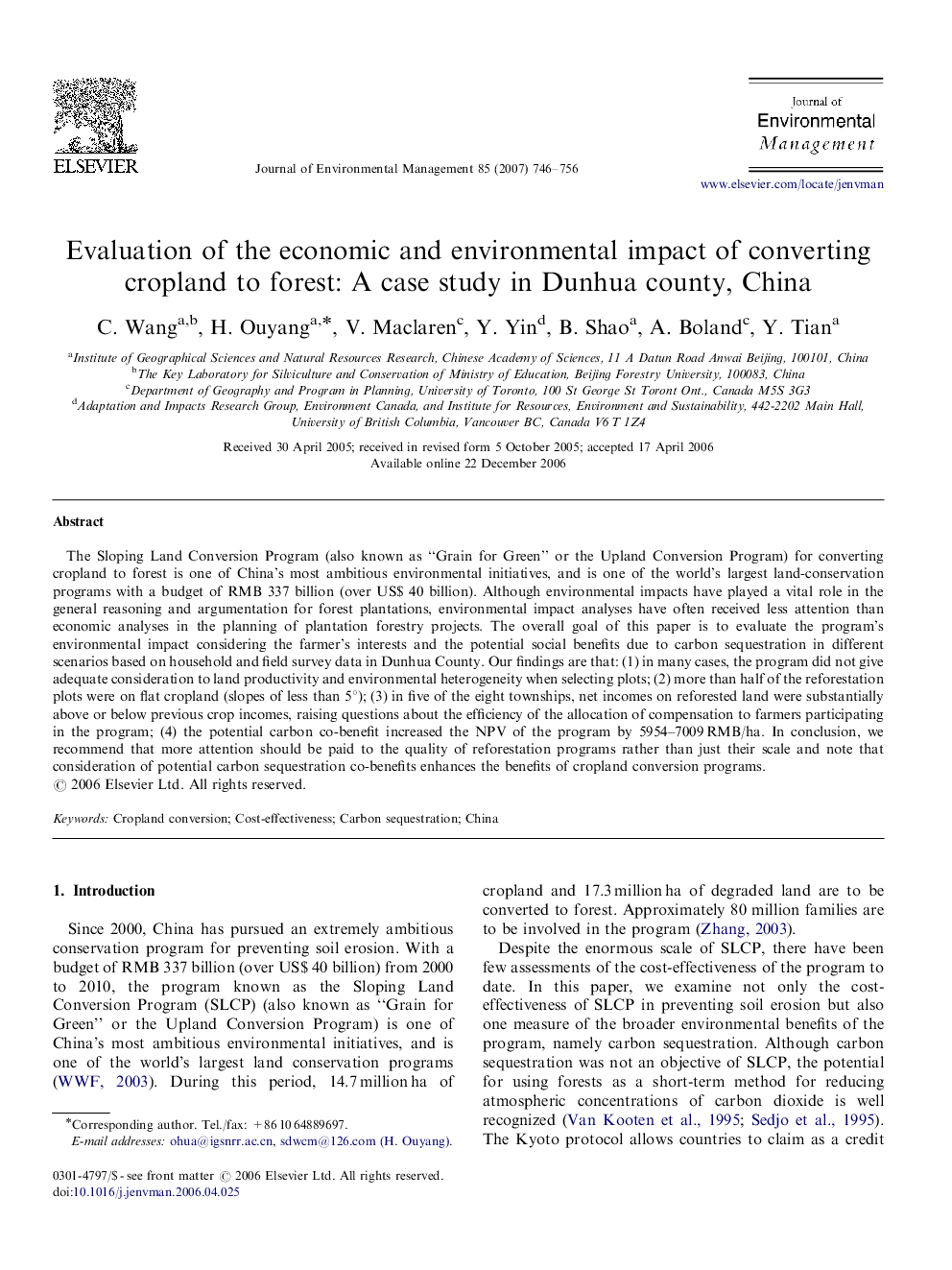| Article ID | Journal | Published Year | Pages | File Type |
|---|---|---|---|---|
| 1058692 | Journal of Environmental Management | 2007 | 11 Pages |
The Sloping Land Conversion Program (also known as “Grain for Green” or the Upland Conversion Program) for converting cropland to forest is one of China's most ambitious environmental initiatives, and is one of the world's largest land-conservation programs with a budget of RMB 337 billion (over US$ 40 billion). Although environmental impacts have played a vital role in the general reasoning and argumentation for forest plantations, environmental impact analyses have often received less attention than economic analyses in the planning of plantation forestry projects. The overall goal of this paper is to evaluate the program's environmental impact considering the farmer's interests and the potential social benefits due to carbon sequestration in different scenarios based on household and field survey data in Dunhua County. Our findings are that: (1) in many cases, the program did not give adequate consideration to land productivity and environmental heterogeneity when selecting plots; (2) more than half of the reforestation plots were on flat cropland (slopes of less than 5°); (3) in five of the eight townships, net incomes on reforested land were substantially above or below previous crop incomes, raising questions about the efficiency of the allocation of compensation to farmers participating in the program; (4) the potential carbon co-benefit increased the NPV of the program by 5954–7009 RMB/ha. In conclusion, we recommend that more attention should be paid to the quality of reforestation programs rather than just their scale and note that consideration of potential carbon sequestration co-benefits enhances the benefits of cropland conversion programs.
